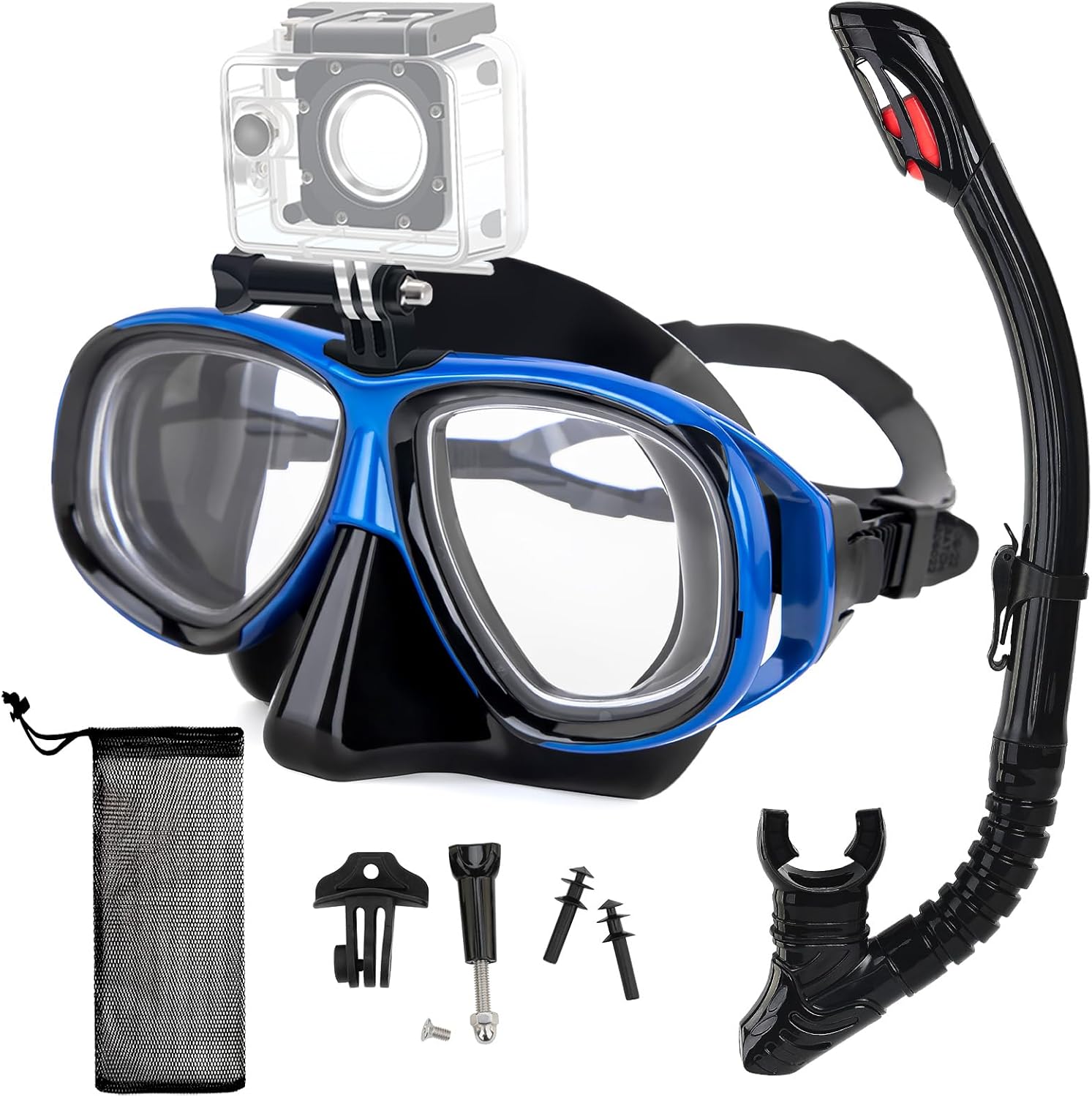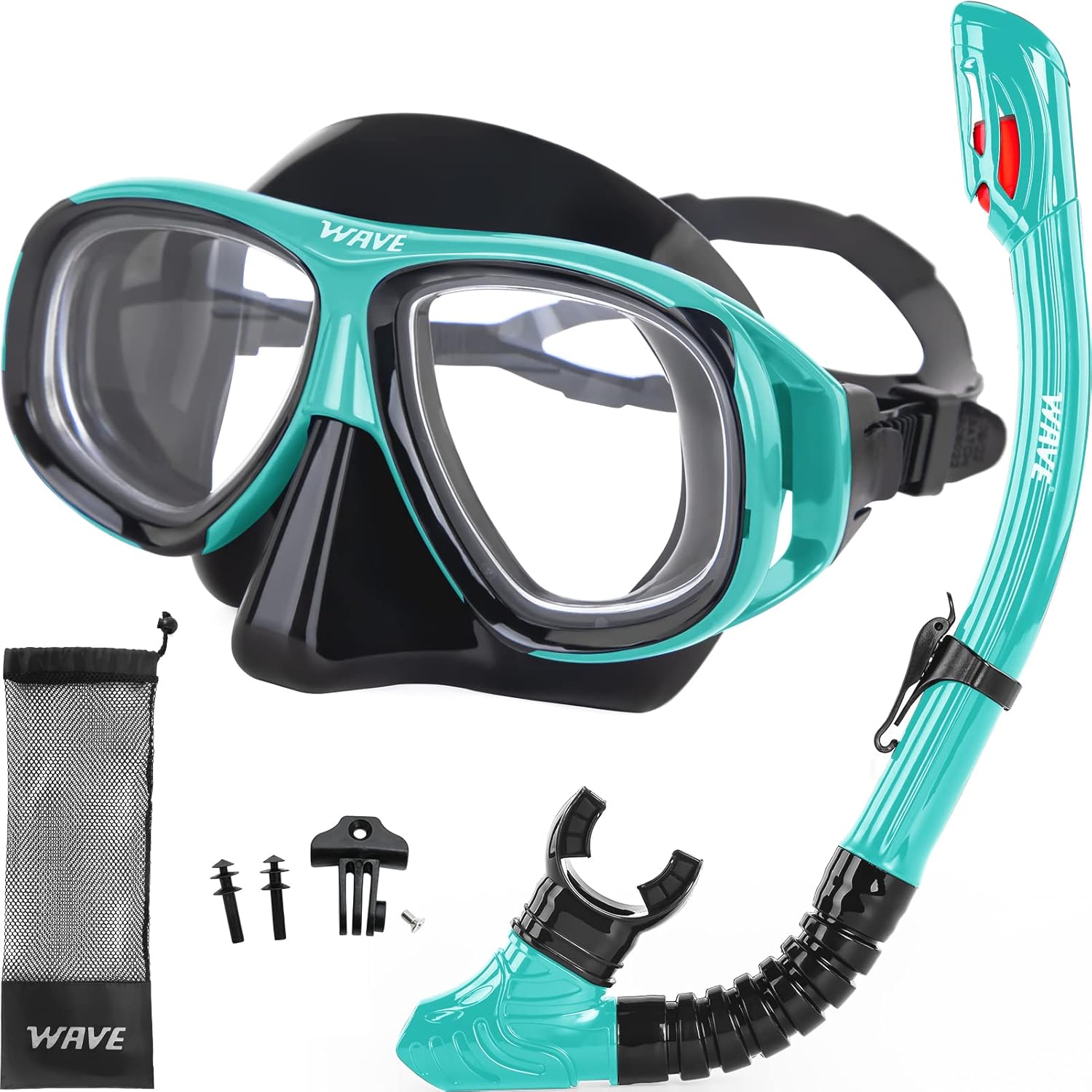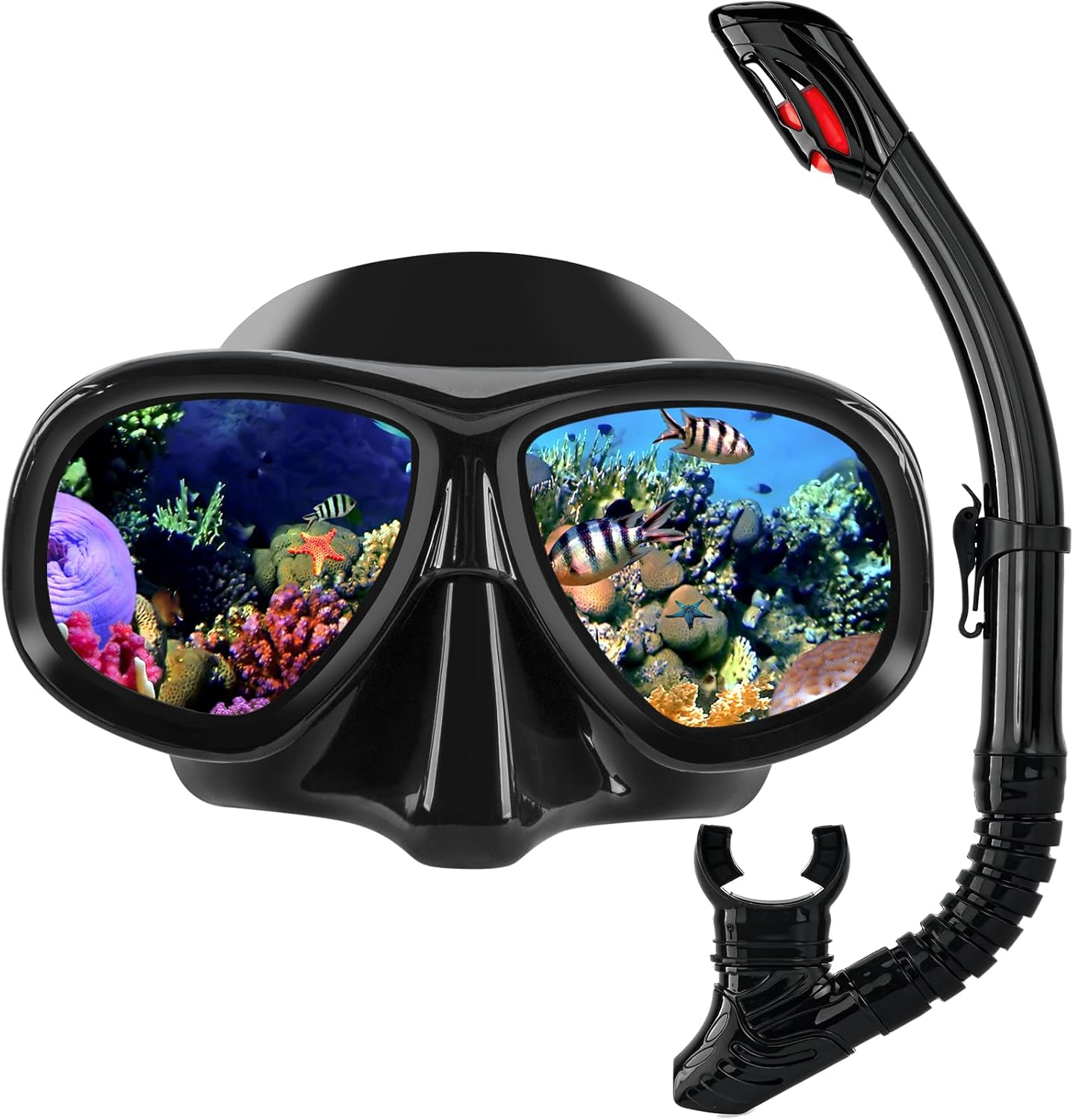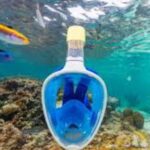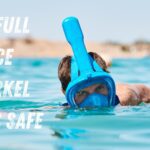How To Snorkel Underwater Like a Pro
Let’s face it, how to snorkel underwater sounds easy… until you’re 10 seconds into your tropical adventure, chugging saltwater like it’s a piña colada and wondering if this was how pirates died. The idea of floating above a colorful reef like a majestic sea creature quickly dissolves into a symphony of coughs, fogged-up masks, and mild panic.
But take heart, fellow gurgler of the deep! This guide will teach you everything – yes, everything about how to snorkel underwater like a semi-aquatic pro.
How to Snorkel Underwater?
The short answer: To snorkel underwater, you hold your breath, dive below the surface, and resurface while using proper technique to clear water from your snorkel. The key is knowing how a snorkel works, how to use it safely above water, and what to do when it’s not in use while you’re submerged.
You don’t breathe through a snorkel while you’re deep underwater. You do use it to conserve breath and recover easily once you’re back on the surface.
This is where confusion sets in. People think a snorkel is an underwater breathing tube but it isn’t. The snorkel’s job is to let you breathe at the surface while your face is in the water.
Once you dive down, it’s a different story: it’s breath-hold diving, not breathing through the snorkel. Think of the snorkel as your pre-dive and post-dive breath buddy, not your submarine oxygen system.
How Does a Snorkel Work?
Think of a snorkel like a bendy straw stuck in the air while your face is underwater. A basic snorkel lets you breathe air from above the surface. Once water goes above the top of the tube (when you dive), that straw is no longer connected to breathable air, it’s just a sad pipe full of seawater.
Types of Snorkels:
- Classic (J-tube): Simple design, no valves.
- Semi-dry snorkel: Has splash guards to limit water entry.
- Dry snorkel: Has a valve that seals shut when submerged.
Dry snorkels are the easiest for beginners wanting to try underwater snorkeling, since they automatically block water from entering when you dive.
Can you breathe underwater with a snorkel?
No, not while fully submerged. You hold your breath underwater and resume breathing when back at the surface, clearing the snorkel first if needed.
How to Dive Underwater While Snorkeling
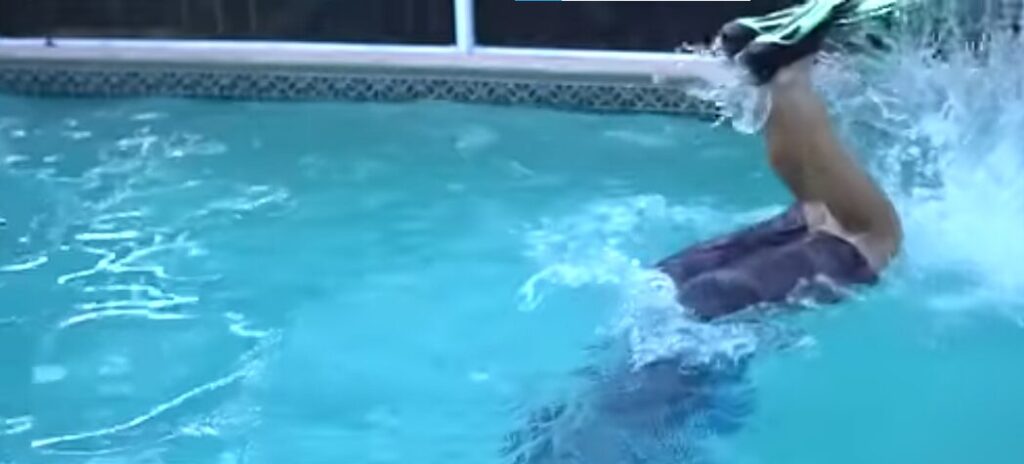
Here’s a step-by-step guide on how to snorkel underwater without choking or sinking like a lawn chair:
1. Inhale Deeply at the Surface
Take a deep, calm breath through the snorkel. This gives you oxygen for your dive.
2. Bend at the Waist and Kick Your Legs Up
This is called a duck dive. Point your arms forward, push your upper body down, and flick your legs up behind you.
3. Hold Your Breath
Once you submerge, the snorkel fills with water. You can’t breathe now, so hold that breath like a pro.
4. Equalize Pressure
Pinch your nose and gently blow or swallow to equalize pressure in your ears as you descend.
5. Enjoy the View—Briefly
You only have as much air as you inhaled. Don’t overstay your welcome.
6. Resurface Slowly
Look up as you ascend and exhale a little as you go. Time to clear that snorkel.
7. Clear the Snorkel
At the surface, blast clear the snorkel by forcefully exhaling to eject water. Or, if using a dry snorkel, simply resume breathing, it probably stayed sealed.
Overcoming the Fear of Breathing Through a Snorkel
The first time you try to snorkel underwater, your brain might scream: “This is unnatural!” That’s normal.
Try this:
- Practice in a pool before hitting open water
- Get comfortable with how to do snorkeling without diving, first
- Focus on slow, steady breaths, not shallow gasps
- Use a dry snorkel for a safer surface experience
Tip: Chew bubblegum before to relax your jaw, but don’t snorkel with it. That’s how you meet a fish dentist.
Choosing the Right Gear
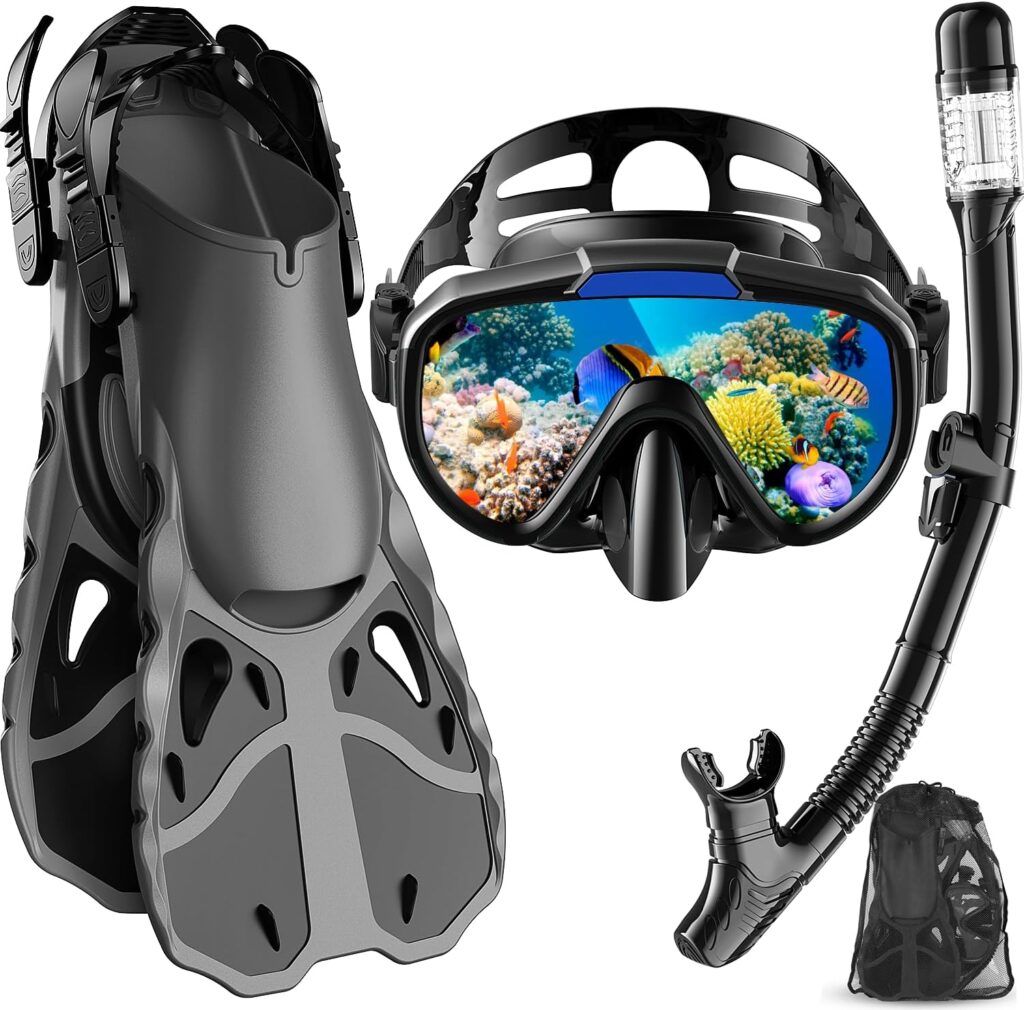
You absolutely need:
- A snug-fitting mask (no leaks or fog)
- A dry or semi-dry snorkel
- Fins (they help with underwater propulsion)
- Optional: snorkel vest or rash guard
- Water shoes (optional)
Knowing how to use snorkeling gear correctly can make or break your experience. Don’t borrow that crusty snorkel set from 1998. Invest in quality gear like a dry snorkel and silicone-sealed mask for comfort and safety.
How to Clear Water from Your Snorkel (Without Gasping Like a Cat in a Bathtub)
Two methods:
1. Blast Clear
- Surface and exhale forcefully through the snorkel
- Think of blowing out a candle made of seawater
2. Displacement Clear
- Exhale as you ascend so the snorkel is already clear when you break the surface
Dry snorkels often require no clearing at all. But even they fail sometimes so, know both methods.
Preventing Panic While Underwater Snorkeling
Most panic comes from:
- Water in the mask/snorkel
- Not knowing what to do when you can’t breathe
- Feeling too deep or disoriented
Practice = Confidence.
Tips:
- Float calmly at surface first
- Always snorkel with a buddy
- Don’t force dives – work up to depth
- If panicked, remove snorkel, float on back, and breathe
Do you need to know how to swim for snorkeling?
Ideally, yes. But even non-swimmers can snorkel in shallow, calm waters with a flotation vest.
How to Keep Your Mask from Fogging Up
Foggy masks ruin everything. Here’s how to defog like a boss:
Use:
- Baby shampoo (diluted)
- Toothpaste
- Anti-fog spray
- Your own spit (yes, it works)
Rub it inside the lens, rinse gently. Never touch the inside once treated.
How to Equalize Ear Pressure When Snorkeling Below
Every meter of depth increases pressure on your ears.
How to Equalize:
- Pinch your nose and gently blow (Valsalva)
- Swallow or wiggle your jaw
- Equalize every 2–3 feet on descent
Don’t force it if it hurts, ascend and try again.
Mastering the Art of the Fin Kick
A proper kick saves energy and helps you move efficiently.
Use:
- Small, slow kicks
- Keep legs straight-ish, kick from hips – not knees
Avoid frantic kicks that churn the water and scare fish. You’re snorkeling, not blendering the reef.
Top Safety Tips for Snorkeling Below the Surface
Knowing how to snorkel underwater doesn’t stop at technique, it extends into awareness, preparation, and safety.
1. Why You Should Never Snorkel Alone
Ocean conditions can change quickly, and even strong swimmers can cramp or panic. Always snorkel with a buddy. A partner can:
- Spot you if you black out or get into trouble
- Help in case of gear malfunctions
- Signal for help if you can’t
Even in calm lagoons, solo snorkeling is like texting while skydiving; nothing usually goes wrong, until it does.
2. How to Signal with Hands or a Snorkel
You can’t exactly yell underwater, so hand and snorkel signals are essential. Learn these before you snorkel underwater:
- 👌 “I’m OK” – Thumb and forefinger make a circle
- 👎 “I want to go up”
- ✋ “Stop” – Palm facing forward
- 🚩 Waving snorkel above water = “I need help”
Practice these with your buddy so no one mistakes a “look at the turtle” for “I’m drowning.”
3. Staying Aware of Currents and Shallow Reefs
Coral cuts are no joke, and currents can sweep you into dangerous zones.
- Always snorkel with the current, not against it
- Observe the reef layout before entering the water
- Avoid standing on coral, it’s alive and can be sharp
- Stay horizontal while diving, don’t kick down toward coral beds
Tip: If you feel a strong current pulling you, swim diagonally across it, not directly against it.
4. What to Do If You Cramp or Get Tired
- Cramps: Stop kicking, float on your back, massage the cramp gently.
- Tiredness: Float, slow your breath, remove your snorkel if needed.
- Exhaustion: Signal for help immediately. Use a snorkel vest for surface support.
Hydrate before snorkeling and warm up with light kicks to prevent muscle tightness.
Practice Routines Before Your First Real Snorkel Trip
If you want to avoid looking like a fish out of water in water, practice is your underwater passport.
Pool Practice: Floating, Clearing, Breathing Drills
Start in a calm pool:
- Practice floating on your face with a snorkel
- Try clearing a snorkel after submerging it
- Learn how to remove and reseal your mask calmly
Gradually Increase Your Underwater Time
Use breath-hold tables (look them up!) to safely train your lungs.
- Hold your breath for 10–15 seconds at first
- Increase by 5 seconds per round
- Rest adequately between rounds
Never hyperventilate. It can cause blackouts.
Visualization for Underwater Confidence
Mentally rehearse duck diving, clearing, and calmly resurfacing. Visualization builds neurological familiarity before your body ever gets in the ocean.
Emergency Snorkel Situations and How to Handle Them
Things can go sideways—even for seasoned snorkelers. Here’s how to stay cool when they do.
1. Snorkel Floods Unexpectedly
- Don’t panic – remove the snorkel from your mouth
- Float on your back or tread water
- Clear it before resuming use
2. Losing a Fin
- Don’t dive for it unless you’re trained and close to shore
- Swim with one fin – alternate arms and legs to maintain balance
- Signal your buddy and head back to shore
3. Mask Ripped Off by a Wave
- Float, calm yourself, and tread water
- Retrieve the mask if nearby, or signal for help
- Never dive or swim blind, you risk coral injuries or disorientation
4. Swallowed Water — When to Stop and Recover
If you inhale water:
- Stop all movement
- Spit it out and cough while floating
- Remove snorkel and breathe through your mouth or nose
- Swim back to shore if you feel rattled
Common Mistakes Beginners Make When Snorkeling Underwater
Learning how to snorkel underwater also means knowing what not to do.
❌ Biting Too Hard on the Mouthpiece
- Causes jaw fatigue
- Damages snorkel
- Learn to gently grip, not chomp
❌ Holding Breath While Ascending (Freediving Crossover)
This is dangerous. Always exhale slightly while ascending to prevent lung barotrauma, especially if diving deep.
❌ Exhaling Too Late
This leads to water staying in the snorkel. Practice clearing techniques and start exhaling the second you reach the surface.
❌ Swimming Too Fast
Snorkeling is a cruise, not a sprint. Swimming too fast burns oxygen, increases anxiety, and kicks up silt – obscuring your view.
Where to Practice Snorkeling Underwater Safely
Choosing the right spot for your first few sessions can make or break your snorkeling experience.
Calm Beaches and Lagoons Ideal for Beginners
Look for:
- Gentle slopes
- No large waves
- Clear visibility
- No boats or jet skis
Examples:
- Hanauma Bay, Oahu
- La Jolla Cove, California
- Akumal Bay, Mexico
Why Pool Practice Matters
Before ocean snorkeling:
- Get familiar with gear
- Reduce panic from water in your mask
- Build confidence in clearing and floating
Practice in a pool gives you the skills to handle chaos before it happens.
Dangers of Snorkeling in Rough Surf or Drop-Offs
Avoid:
- Surf zones
- Rocky entries
- Steep reef drop-offs
- Strong currents
These conditions require advanced experience and can quickly turn fatal for beginners.
Snorkeling vs Freediving vs Scuba: What’s the Difference?
Understanding why how to snorkel underwater isn’t the same as diving will save you from costly mistakes.
1. Snorkeling
- Surface-based
- Breath-hold for shallow dives
- Simple gear
- No pressure equalization needed unless you dive
2. Freediving
- Deep breath-hold diving
- Trains CO₂ tolerance and lung capacity
- No breathing gear used underwater
- Requires equalization and safety knowledge
3. Scuba Diving
- Uses tanks to breathe underwater
- Requires certification
- Can stay submerged for long periods
- Deep dives (often 30–100 feet+)
Why doesn’t your snorkel work underwater like scuba gear?
Because snorkels don’t supply air, they only connect you to the surface air.
RELATED: Can you snorkel while pregnant?
Snorkeling Myths Debunked
❌ “You Can Breathe While Completely Submerged with a Snorkel”
Only in movies or in your dreams. Once submerged, your snorkel becomes a pipe full of water. You must hold your breath.
❌ “Full-Face Masks Are Always Safer”
Some are well-designed. Others are cheap knock-offs that can lead to CO₂ buildup and accidents. Choose full-face masks only from trusted brands.
❌ “Snorkeling Is Easy, You Don’t Need Practice”
Snorkeling well takes technique, comfort, breath control, and awareness. Sure, it looks easy – so does juggling chainsaws until you try.
How Safe Are Full Face Snorkel Masks?
They’re popular for comfort, but controversial.
Pros:
- Easy breathing through nose & mouth
- Wide field of vision
Cons:
- Potential for CO₂ buildup if poorly designed
- Harder to clear water if flooded
- Not suitable for underwater diving (they can leak and are harder to equalize)
How safe are full face snorkel masks? Only buy high-quality brands. Cheap knock-offs have been linked to accidents.
Can You Snorkel with Glasses?
|
|
|
Nope, not directly. Masks and glasses don’t mix.
Solutions:
- Buy a prescription snorkeling mask
- Use contact lenses (soft ones work best underwater)
- Stick-on corrective lenses (cheap but meh)
How Much Weight Do You Need for Snorkeling?
If you’re staying on the surface – zero.
But if you want to dive deeper and stay submerged for short bursts, a light weight belt can help.
Rule of thumb:
- 4–6% of your body weight
- Test in a pool or with an instructor first
Caution: Never use weights without training or a buddy. It increases the risk of shallow water blackout.
FAQs on How to Snorkel Underwater
How do you breathe underwater with a snorkel?
You don’t while submerged. You breathe at the surface with the snorkel in your mouth, face down.
How to snorkel underwater without panic?
Practice calmly, stay in shallow areas, use quality gear, and go slow.
How to do snorkeling with confidence?
Start small. Pool → calm beach → reef edge. Build your skills and trust your breath.
The Bottom Line on How to Snorkel Underwater
How to snorkel underwater isn’t about turning into Aquaman overnight. It’s about learning how your body behaves in water, how to master breath and gear, and how to appreciate the ocean without fear (or a mouth full of saltwater).
So put on your mask, take a deep breath, and glide like you were born in the sea. And if you still feel silly, just remember: even sea turtles need to come up for air.
